Shared Hope International’s Founder and President, Linda Smith, speaks about our work as restoration-focused in the U.S., not in overseas rescues.
Thanks once again to Hollywood, America added a new character this summer to the pantheon of action superheroes it has created: the swashbuckling man who sweeps into corrupt foreign countries to rescue children from the clutches of sex trafficking. Americans love the archetype of an outside savior boldly setting things right and exacting justice on those who deserve it.
This is the plotline that the film industry has created for us with children and sex trafficking. Although Hollywood has programmed us into believing that ending trafficking can be accomplished with brave rescues, it’s more complicated than that. Disrupting and dismantling what is a developed and multi-faceted industry involves a lot more than what can be shown in a dramatic and suspense-filled story that’s neatly wrapped up in two hours.
Let’s unpack what a rescue is, why it’s problematic, and why Shared Hope International takes a different approach.
Shared Hope does not carry out rescues
Mention “rescue,” and most people will think of a forceful snatching-back of children who have been kidnapped and exploited. By their nature, rescues are dramatic and attention-grabbing.
Shared Hope takes an approach to the sex trafficking industry that is broader and wholistic and that includes more proactive responses. Our work is in three major areas:
- Prevention: Through highly developed training for both laypersons and professionals, guidance on internet dangers, and with Ambassadors of Hope (volunteer representatives) across the country, we work on prevention strategies.
- Restoration: Our strategic guidance and funding helps local organizations expand shelter and services for survivors.
- Bringing justice: Our recommendations through our Report Cards on Child and Youth Sex Trafficking are changing the legislative and policy landscape in every state.
Working in these areas is sometimes slow and requires involvement in activities on a smaller scale. Changing large systems from within takes a lot of time. Reforms to whole industries do not happen overnight. Healing and recovery for survivors often takes place over many years.
We acknowledge that making a difference in a slow, often low-key way is sometimes frustrating and not as thrilling as a dramatic movie-type rescue. Yes, we work with urgency, knowing that especially children are at risk, but we pace ourselves to run not a sprint but a marathon. We believe the only way to create long-term, permanent change is to be in the work for the long haul. We’ve been at it for 25 years and have developed a good understanding and expertise to tackle the complexity and multiple facets of this issue.
Restoration is the real rescue
People who are able to escape trafficking situations need to be treated with a high level of care and connected immediately to services and supports. Lacking that, a trafficked person is likely to return to his or her former life by choice or by force. A very real danger then is re-exploitation by the original conditions that brought about the vulnerability to trafficking in the first place.
In addition, survivors need time on the long road of recovery. They are often afraid of or feel victimized by law enforcement. They have to learn to trust other people who want to care for them after living for years as enslaved property, being coerced and threatened, forced to live in dependent and abusive situations.
Shared Hope focuses on restoration with two strategic programs. One is through the amazing efforts of our restoration grant partners who do the immediate work that includes providing safe shelter, medical and mental health care, spiritual renewal, education, life skills, job training and vocational skills. The other restoration program is at the core of our long-term strategy. It involves our efforts in every state to promote legislation that requires restoration services to be provided for survivors of sex trafficking.
Rescues are paternalistic
The idea of a rescue is inherently tied to having a savior character. And with that, the person being rescued is viewed as helpless and powerless. That attitude is in and of itself re-victimizing. Shared Hope, in its assistance to and support of survivors, recognizes their agency, their own will and desire to be restored and to recover from their trauma. We strive to acknowledge their autonomy and empower them by giving them a voice. A survivor-centered approach requires that we do not carry out actions intended to burnish our own image or demonstrate our own strength.
Shared Hope’s approach is not designed to create or focus on a single hero. Thankfully, the anti-sex trafficking movement has many heroes, and each year we recognize some of them through our restoration grants program and our Pathbreaker Awards. These individuals and organizations are the real heroes. Our daily work is in outreach to creators of policies and average people who can be part of combatting trafficking as part of their professional and personal day-to-day lives.
Focused and steady wins the race
In the measured, deliberate approach that Shared Hope takes, we work to disrupt the sex trafficking industry from various angles. Our philosophy is that each person has a role to play in preventing and ending commercial sexual exploitation and that a collaborative, community-wide response is necessary. It takes the different parts of our society — the institutions and systems of law enforcement, governments at all levels, and the justice system, as well as the smaller, social units of families, parents, churches and other communities, healthcare professionals and teachers playing a part to undo what commercial sexual exploitation has built.
Shared Hope’s work is in building relationships and making connections between advocates and organizations. Our focus is educating school counselors, changing attitudes of judges and building the grooming-detection skills of youth. This all takes time, but we are` making progress.
We’ll leave the dramatic rescues to Hollywood. A real rescue is only one part of a much larger picture, and Shared Hope is applying its years of experience and expertise to all parts of the scene.






